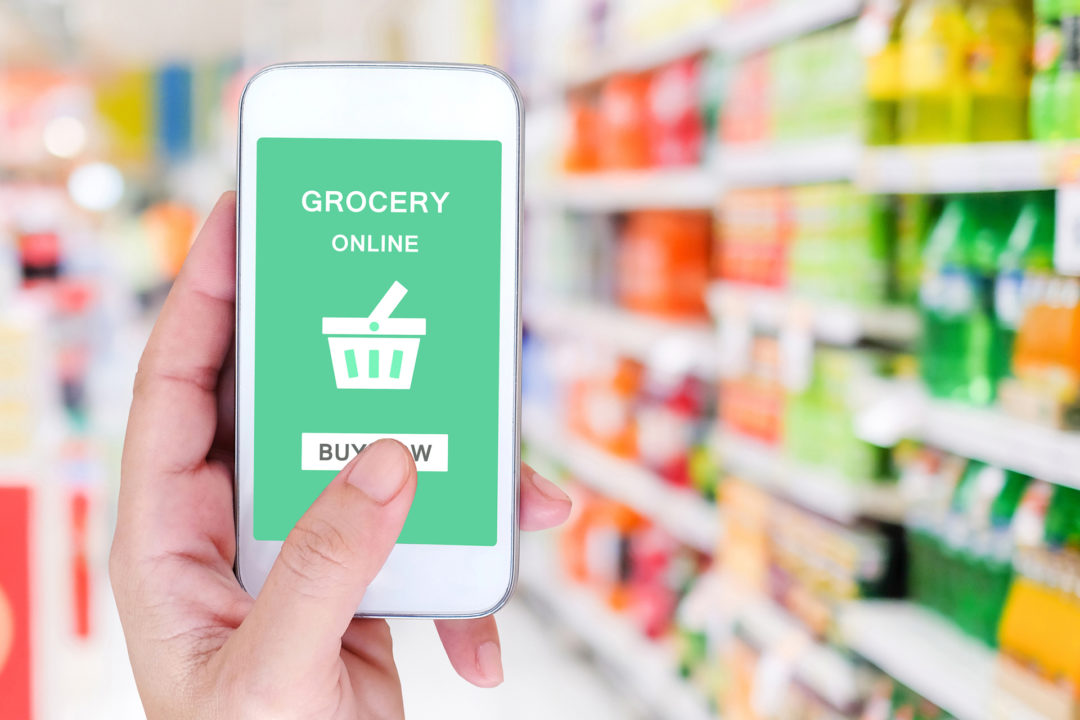Most Americans—92%—get involved in and enjoy food shopping; both men and women, older and younger generations, all of whom regularly shop an average of four retail channels and five store banners per month, according to findings from Arlington, VA-based Food Marketing Institute (FMI). Earlier concerns about food exposing us to the virus have shifted to concern for steeply spiking food inflation and lack of availability.
Today in the U.S., 15% shop for food exclusively online—about double the 8% pre-pandemic rate—and 36% haven’t shopped online for food, according to FMI and Bellevue, WA-based ethnographers, The Hartman Group. This leaves the 49% in the middle who are “hybrid” shoppers, doing a mix of online and in-store shopping. How do these folks think about acquiring food?
According to Hartman, hybrid online and in-store shoppers weigh the convenience of online shopping against the superior control they get by shopping in-store. If pressed for time, a hybrid shopper may opt to use their local grocer’s online shopping app to have their order delivered, or to pick it up. But if the quality of the selection is critical—think how ripe the bananas, avocados, and tomatoes are—then a visit to the store becomes necessary.
Overall, the 64% of shoppers who shop online for food pickup or delivery—some or all the time—account for 20% of total U.S. grocery purchases. Simple math tells us the other 80% of U.S. groceries still comes from in-store shopping. The pandemic was probably a pretty good test of what the upper limits for online food shopping will be.
The trends now point to a shift back to in-store from online, so the 20% of all groceries originating with an online order is likely a high water mark, at least in the near- to medium-term. One example from a consumer survey taken by ChaseDesign found those who say they always use home delivery when buying groceries fell by nearly half to 16% this year from 31% in 2021. Their reasons include delivery fees and the inflation spike in food costs that have made the relative value of heading to the store themselves a better deal. Add to this the greater degree of control of what winds up in their shopping cart and we begin to understand the staying power of brick-and-mortar food retailing.
In the same survey, most consumers said they simply prefer to shop in a physical store over shopping online. It appears they distrust retailers and third-party order selectors to deliver precisely the foods they want. Fully a third of survey respondents were dissatisfied for some reason with the products they received, including poor quality or inappropriate substitutions for items that were unavailable.Other factors favoring in-store shopping include long wait-times for curbside pickup of online orders, coordinating schedules to receive deliveries, concern about stolen packages, not being able to add last-minute items, not being able to apply discount coupons, and wrong, missing, or damaged products. Shoppers also tend to avoid online purchases of fresh perishable foods including meat, seafood, produce, dairy, frozen, deli, and bakery and floral—all of which require firsthand “eyes-on” decisions about quality.
Recent Hartman research explored the idea that online would win over in-store shopping because there are no physical limitations to online product assortments. The internet “removes the friction of distance, which opens the broader set of stores and their combined inventories,” as Hartman Vice President for Strategic Insights, David Feit, says.
Continuing, Feit says, “But in fact, from the shopper’s perspective, there’s really a lot more to it there. They may be concerned not with what’s available at the online store or stores they could shop. They’re more concerned with what they actually end up with and how it meets their underlying need. There’s this need to feel some control over what that is. So in-person continues to be perceived as winning on delivering the best quality, the ability to choose, the more tactile experience. And just because so many more Americans have now accepted a role for online shopping doesn’t mean the perceived benefits of in-person have diminished. It’s more immersive and multifaceted. There’s more of a 360-degree experience.”
Online search engines can also frustrate shoppers with too little information up front or at the point of buying. Feit says, “Search boxes, product category names, brands, photos, ingredient labels are really up against an in-store experience. In-store may not contain absolutely more information than the internet, but it is full of sensory inputs that are very front-heavy in the buying decision. It’s just hard to see all of the options at once online. So shoppers will perceive in-store as better helping them make the decision to select out of all the different options that are there.”
The Importance of “Place”
For years, we’ve spoken about the three pillars of brick-and-mortar retailing: people, product, and place. Compared to the other retail channels, independent natural products retailers have excelled in their knowledgeable workforces and in the superior quality of the natural and organic products they carry.With online now competing for food market share, convincing shoppers it is worth getting up from their keyboard, mouse and browser to come to your store includes not only the quality of your people and products, but the quality of the place—your physical store. In the past, you may have succeeded by relying solely on your team and products. But today, some investment in your physical plant will help you shift the balance of power away from the internet and back towards your store.JJ










